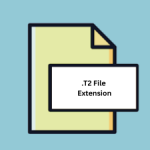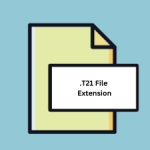.GAL File Extension

GenePix Array List File
| Developer | Molecular Devices |
| Popularity | |
| Category | Data Files |
| Format | .GAL |
| Cross Platform | Update Soon |
What is an GAL file?
The .GAL file extension is primarily associated with the GenePix software suite, developed by Molecular Devices.
GenePix is widely utilized in bioinformatics and molecular biology research for the analysis and visualization of microarray data.
These data files, with the .GAL extension contains crucial information about the layout of genetic probes on microarray slides.
More Information.
The .GAL file format was introduced alongside the early versions of the GenePix software. Its primary purpose was to store array layout details, including the position of genetic probes on a microarray slide.
Researchers could design experiments, arrange probes, and save the layout configurations in .GAL files for subsequent analysis and reference.
This streamlined workflow significantly enhanced the efficiency and reproducibility of microarray experiments.
Origin Of This File.
The GenePix software emerged in the late 1990s, amidst the burgeoning interest in DNA microarray technology.
As researchers sought more efficient ways to analyze vast amounts of genetic data, Molecular Devices introduced GenePix as a comprehensive solution.
The .GAL file extension was conceived as part of this ecosystem, aiming to streamline the handling of microarray layout information.
File Structure Technical Specification.
.GAL file typically consists of structured text data encoded in a plain text format. The file structure may include header information followed by tabular data delineated by specific delimiters.
Key elements contained within a .GAL file include probe IDs, coordinates, and optional annotations. The format’s simplicity facilitates easy parsing and manipulation using various software tools and programming languages.
How to Convert the File?
Converting .GAL files to other formats may be necessary to facilitate interoperability with different software platforms or analytical workflows.
Several tools and methods are available for converting .GAL files, including:
- GenePix Software: The GenePix software suite itself may offer options to export .GAL files to alternative formats such as CSV (Comma-Separated Values) or TXT (Plain Text), enhancing compatibility with other software tools.
- Third-Party Conversion Utilities: Various third-party software tools or online converters specialize in file format conversion and may support .GAL files, allowing users to convert them to formats like Excel spreadsheets or BED (Browser Extensible Data) files.
- Custom Scripts: For advanced users proficient in programming, custom scripts or code snippets can be developed to parse .GAL files and transform them into desired formats, providing flexibility and customization options.
Advantages And Disadvantages.
Advantages:
- Compatibility: GenePix is a widely adopted platform in the scientific community, ensuring broad compatibility and support for .GAL files across different research institutions and laboratories.
- Standardization: The structured nature of .GAL files promote standardization in microarray data management, facilitating collaboration and data exchange among researchers.
- Efficiency: By encapsulating array layout information in a compact format, .GAL files enable efficient storage, retrieval, and analysis of microarray experiments.
Disadvantages:
- Software Dependency: .GAL files are primarily associated with the GenePix software suite, necessitating the use of specific software for comprehensive data analysis and visualization.
- Lack of Flexibility: While suitable for microarray layout information, .GAL files may not accommodate other types of data commonly encountered in genetic research, potentially limiting their utility in certain contexts.
How to Open GAL?
Open In Windows
- Install the GenePix software suite on your Windows system.
- Launch GenePix and use the File menu to open .GAL files for analysis and visualization.
Open In Linux
- While GenePix is not natively available for Linux, you may explore compatibility options using Wine or other compatibility layers.
- Alternatively, consider using virtualization software to run GenePix within a Windows environment on your Linux system.
Open In MAC
- Similar to Windows, install the GenePix software on your MacOS system.
- Open GenePix and access the .GAL files through the File menu for viewing and manipulation.













